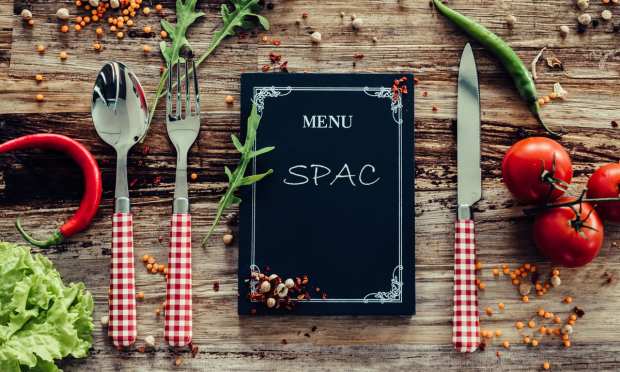SPACs On The Menu: Restaurant Industry Veterans Seek Solutions For Current Crisis

It was John Adams, second president of the U.S., who once said: “Every problem is an opportunity in disguise.” Apparently, Andy Pforzheimer and Dave Pace have been brushing up on their history.
Because while the restaurant industry continues to navigate an existential crisis brought on by the pandemic, Pforzheimer and Pace have found a way to inject more capital in the beleaguered sector and create a new opportunity at the same time. The two industry veterans have created a blank check, or special purpose acquisition company, for the restaurant business. Its purpose will be to aggregate several restaurant chains into a new company whose value will be high enough and its future promising enough to go public.
Is it a good idea? The money people say it is. The new SPAC, called Tastemaker, received $276 million via IPO on Jan. 12. And while Tastemaker has already achieved its initial goal, it’s not the SPAC that’s important. It’s the restaurant business itself that’s the key issue, as both concurred in a recent conversation with PYMNTS’ Karen Webster. The process of building the new company has been an education, despite the fact that both enter this new venture with deep roots in the restaurant industry. Pace is the chairman of Red Robin, while Pforzheimer is the former CEO of the Barcelona and Bartaco brands.
The fact that so many businesses in the dining segment were decimated by the pandemic is, in many cases a tragedy, Pforzheimer and Pace agreed, particularly for the mom-and-pop shows that were quickly pulled under. But for all the destruction it wrought, the pandemic also had an undeniable gift for separating the wheat from the chaff.
When thinking about which restaurants and entities to partner with, Pace and Pforzheimer agreed that facing a rapid-onset global health crisis highlighted the creativity of one’s management team. The pressure, Pforzheimer said, really shows “who’s swimming with a bathing suit and who’s not” in terms of identifying the teams that think on their feet, have a modern tech stack and are ready to make a go at serving the omnicommerce customer in a landscape that will be very different by the time 2021 is done.
Already, Pace said, they’ve seen a shift from urban to suburban markets, a downsizing in footprint sizes and changes in real estate pricing, all of which put different pressures on restaurateurs. But they’re also seeing that the smart management teams are already ahead of this, and are looking for real estate and seeking out opportunities caused by the disruption. “They’ve already figured out that we can’t run business like we did before the pandemic,” Pace said. “We think differently now. And those are the people we’re looking to partner with.”
Creating A New Normal
Restaurant dining, perhaps unique among pandemic shifts to digital, is likely to reset pretty significantly in the post-pandemic period, Pforzheimer said.
“The world doesn’t suddenly look like a vastly different place where everybody orders from their phone and eats at home. We think a lot of demand will go back to where it was before,” he predicted. “Those that come out on the other side face fewer competitors, better rent structures and better labor structures, and they’re really in a position to put their mark on the world.”
It won’t come back exactly the same, however, though it’s hard to see where the actual differences will be. Maybe Midtown Manhattan will never get back to the same office occupancy, and perhaps some of those office spaces will convert to apartments. Maybe consumers will get used to ordering carryout or delivery on weeknights. As long as workers are in the field, both Pace and Pforzheimer said, restaurants will be a cyclical business.
“What matters is who’s got a great brand with a great product that people really love, as well as smart management, adaptable technology and good balance,” said Pforzheimer. “Those are the brands that will come out of this. They’ll be a little bit different, but they’ll come out well. We’re here to work with the brands that are ready to accelerate.”
SPAC Strategy
For Pforzheimer, the choice to orient toward a SPAC grew out of the sale of his last business a few years back to a strategic investor. They made a fair amount of money, he said, but the experience of trying to balance the needs of everyone involved in the transaction proved to be difficult.
“We just couldn’t make all the pieces work to get the price we wanted. So when I saw this faculty and when understood how it worked, I immediately felt like, ‘I wish I had known about these back then — it would have made my life so much better.’ But there are some situations where it’s exactly what is called for,” he said.
The restaurant industry as a whole is entering into just such a situation right now, Pace explained. After a year of having to rapidly innovate and digitize its operations from end-to-end, the sector needs ensure that the innovators who found a way to survive the pandemic can also thrive in the post-pandemic world.
“It wasn’t like we started out last summer and said, ‘the industry is a mess, let’s go do a SPAC right now.’ But what we see now is an opportunity — and the question is, how do we take advantage of the disruption?” said Pace. “I think all the technology that has evolved was once a nice thing to do before the pandemic. Now, it’s become a must-do during the pandemic — and it’s going to be a must-do coming out of it. All of those things have combined to provide an opportunity.”
An opportunity, both agreed, that isn’t going to disappear once the pandemic does — but will, in fact, keep picking up its pace even as the industry starts to reset to in-person service.
